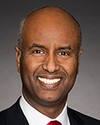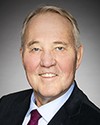I don't know that I have a definitive list, but I would say that I think we've recognized the importance of investments in counter-drone capabilities. I think there is absolutely a need for increased air defence capability. Listing the top three, those two would certainly jump out at me right away. I think we've seen a significant increase in drone warfare as part of the war in Ukraine, which underlines the need for investments across the alliance in those capabilities.
Evidence of meeting #3 for Foreign Affairs and International Development in the 45th Parliament, 1st session. (The original version is on Parliament’s site, as are the minutes.) The winning word was russia.
A recording is available from Parliament.



